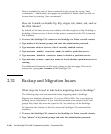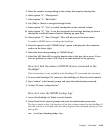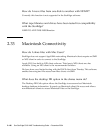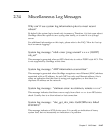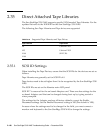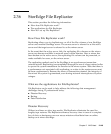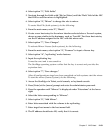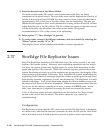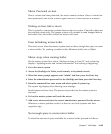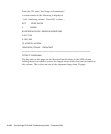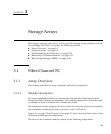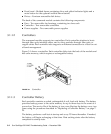
Chapter 2 NAS Head 2-149
2.36 StorEdge File Replicator
This section provides the following information:
■ How does File Replicator work?
■ The applications for File Replicator
■ How do I set up File Replicator?
How Does File Replicator work?
Replicating allows you to duplicate any or all of the file volumes of one StorEdge
server onto another StorEdge server. The source server is referred to as the active
server and the target server is referred to as the mirror server.
In the event that the active server fails, the replicating file volumes on the mirror
server can become available to network users within minutes. Once a mirror has
been broken on the active server, the replicating file volume can be promoted, or
made available for users, on the mirror server.
The replicating method used in the StorEdge is an asynchronous transaction-
oriented mirror. Replicating is accomplished through the use of a large mirror buffer
to queue file system transactions for transfer to the mirror system. Note that there is
a performance cost associated with replicating, as writes to the master server must
be done synchronously. Because the mirror is transaction-oriented, the integrity of
the mirror file system is guaranteed, even during network interruptions or system
outages.
What are the applications for File Replicator?
File Replicator can be used to help address the following data management
challenges facing IT professionals today:
■ Disaster Recovery
■ Backup
■ Data Distribution
Disaster Recovery
Without a reliance on slow tape media, File Replicator eliminates the need for
lengthy tape restores. File Replicator enhances recovery time in case of a complete
loss of data, as businesses can now access mission-critical data from an online
backup on a mirror StorEdge.




